The Apple iPad 2 Review
by Brian Klug, Anand Lal Shimpi & Vivek Gowri on March 19, 2011 8:01 PM ESTSmart Covers
Lately Apple has been trying its hand at first party case solutions. It stated with the bumper on the iPhone 4, carried over to the original iPad, and continues now with the iPad 2. Bumpers were an interesting idea, though clearly designed to mitigate unintended antenna attenuation from holding the phone in your hand, and the first iPad case, while novel, never felt quite right in the hands and had an unhealthy attraction to table crud. I also go over smart covers in our video review.
Third time's a charm, and this time they're both better engineered and endowed with the magic of magnets - they're called called smart covers.
I told Anand that I wasn't going to buy another expensive first party cover at launch just because there weren't any other options, yet here I am with a black leather smart cover.
Smart covers come in two materials - polyurethane and leather. There are five neon polyurethane colors and five more subtle/traditional leather colors. Polyurethane runs $39.00, leather will cost you a somewhat staggering $69.00. I opted for the black leather, Anand opted for neon orange and blue to match the official AnandTech color scheme (why didn't I think of that?).
The polyeurethane covers have a soft textured feel to the front and get the job done at the same price as the first Apple iPad cover. The colors aren't quite as saturated as you'd expect (it's more of a light blue and creamsicle rather than neon blue and lambo orange) but they still look pretty good.
The leather version feels and looks real, and passes the standard sticky test for leather. The outside of the cover is the actual leather surface, whereas the inside is a soft microfiber material. Both the polyurethane and leather models have this microfiber interior. The benefit is that it does keep the screen somewhat clean, the only downside is that it doesn't clean along the vertical strips where the smart cover folds. After a couple of days, you end up with some vertical strips of greasiness punctuated by thick ones of clean.
The smart cover aligns and attaches to the body of the iPad 2 using six magnets along its side that line up with a similar set of magnets on the device. When I acquired the smart case at launch, I immediately set out to determine what magnetic wizardry was at play and borrowed some magnetic viewing tape from my friend Alex (who wrote the glass section). Also no, the smart cover does not work with the iPad 1.
You can clearly see the set of magnets on the iPad 2 and smart cover that are used for alignment using the magnetic viewing film. This strip is from United Nuclear, but there are other vendors online. There are two visible sets of three magnets on the iPad 2 which mate up with corresponding patterns of magnets on the smart cover.
The magnetic viewing film is comprised of tiny beads with a small nickel filament inside, and are suspended in a fluid between two transparent polymer sheets. One side of the bead is reflective and appears light green, the opposite side is matte and appears dark green. The nickel filament orients along the magnetic field, and just like that we can see it.
The iPad 2 also has magnets on the far right side to keep the smart cover latched closed. These mate up to an appropriate set of magnets on the smart cover. Inspecting the smart cover carefully also shows a circular magnet which is used to trigger the iPad 2’s magnetic lock sensor.

The circular magnet above the strips of bar magnets is used for signaling the closed/lock sensor on the iPad 2.
Unsurprisingly, you can also make MacBooks and MacBook Pros that use the same kind of magnetic latch sensor go into standby by waving the smart cover or iPad 2 over just the right place. There’s an excess of magnets on the far right of the smart cover to hold the flap in position when rolled upon itself. The only other unintended consequence of putting so many magnets in the iPad 2 is that it sticks to every ferromagnetic surface. The cafe I frequent has metal tables, and the iPad 2 literally sticks to the surface until you yank it off.
The first time you fire up the iPad 2, the area in general settings lacks any toggles for the smart cover lock. After you attach the smart cover and activate the sensor once, a new toggle appears. It's one of those subtle things that Apple does which fits with the - keep extraneous settings and indicators hidden when they're not actually doing something - philosophy.
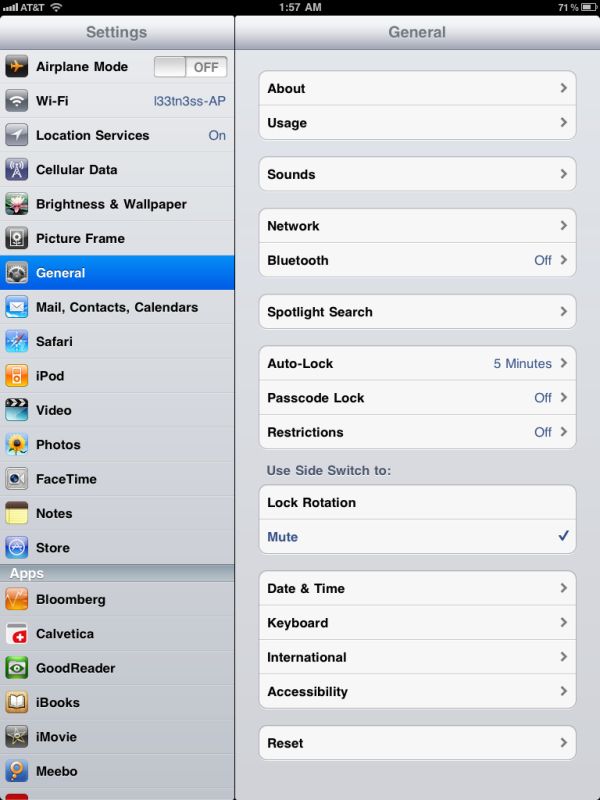
Left: Before attaching the smart cover for the first time, Right: After attaching the smart cover.
The smart cover can be rolled onto itself and into a triangle, which then angles and supports the iPad at 15 degrees for typing on a flat surface.
Push the iPad 2 further, and it'll stand upright at 115 degrees for use as a more traditional display, say if you have the Bluetooth keyboard or want to use it to watch movies.
The smart cover, while novel, has a few puzzling flaws. First up is what position to put the flap when the cover is opened and held in the hands. Folding the smart cover around to the back works, but magnetic attraction is weak and flap doesn’t stay in place at all. This is how users place the flap in videos on Apple.com and in marketing materials. The cover also makes it difficult to access the power and volume buttons in this position, though admittedly locking functionality with the smart cover should be left to the flap.
Left folded completely over, the second problem is that the cover then completely occludes the iPad 2’s rear facing camera. The other option is to fold the cover in half, which is probably the best solution. You don’t cover up the camera, and the cover doesn’t flap around as much. It still isn’t entirely secure, however.
Third, the smart cover leaves you with the same limitation as the first Apple iPad case: there's no way to make the iPad 2 stand up in portrait mode. There are a couple of landscape options as we described earlier but if you want to prop up the iPad 2 in portrait mode you're out of luck.
The final problem is that the smart cover doesn’t protect the rear of the iPad 2, which any iPad user will tell you is the surface that immediately starts to show aging from scuffing, scratching, denting, and white aluminum oxide from handling. Aluminum is a soft material, and while the iPad 2's aluminum seems to be harder and less porous than the MacBook Pro, it still picks up table crud like nobody's business. It’s frustrating because the smart cover is otherwise one of the most innovative parts of the iPad 2 experience.
As a stand, the smart cover is excellent, and it’s also nice to see Apple finally adopting some magnetic signaling for when to lock the device. Any Blackberry user will tell you this isn’t anything new at all, but execution here is indeed awesome.


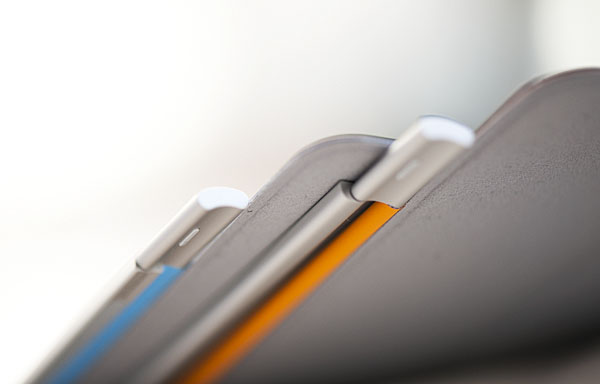
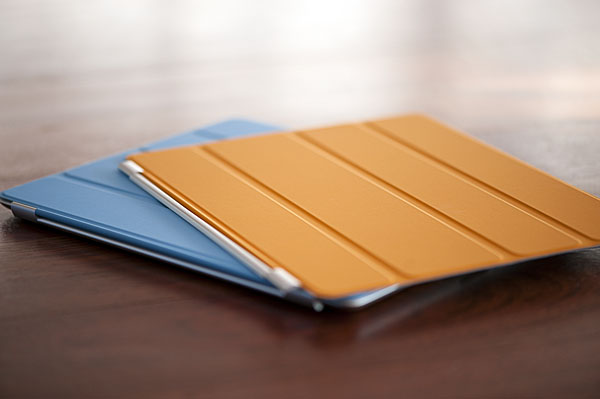
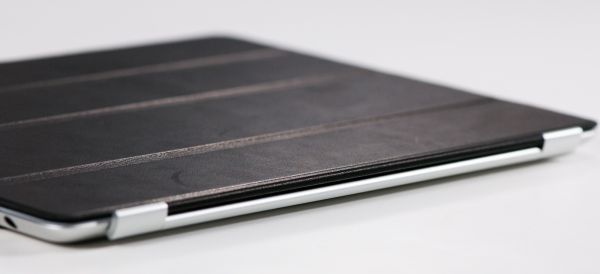
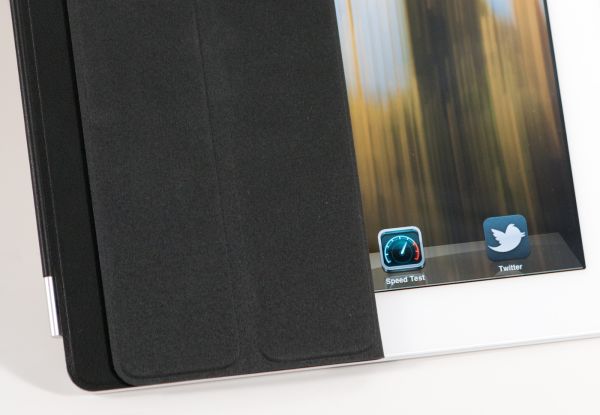
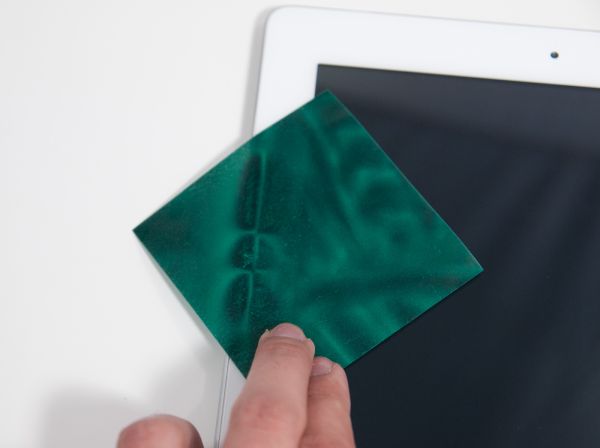
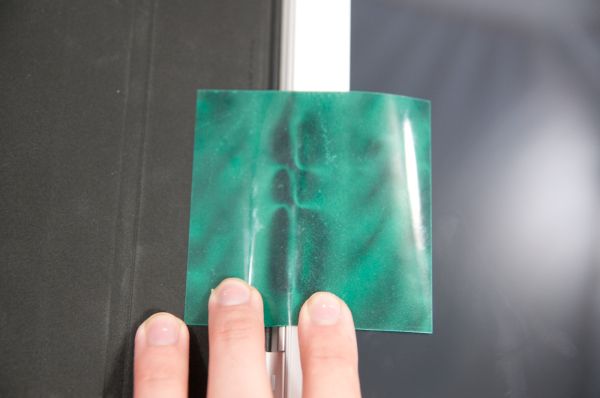







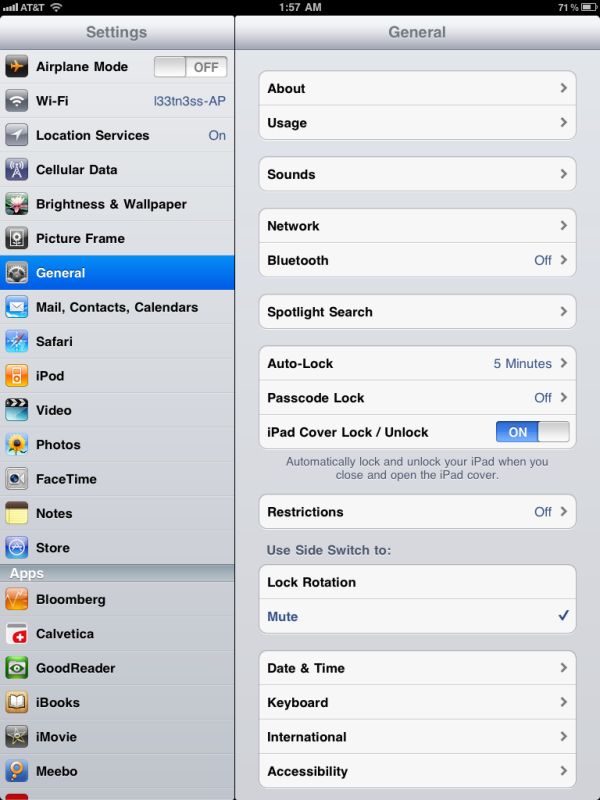
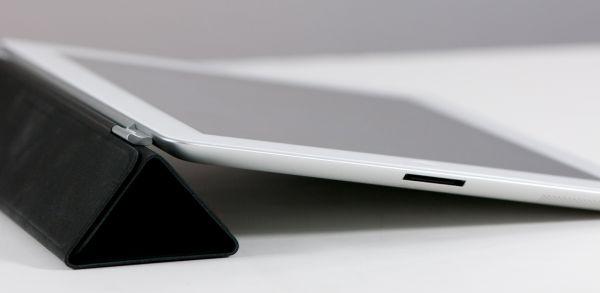
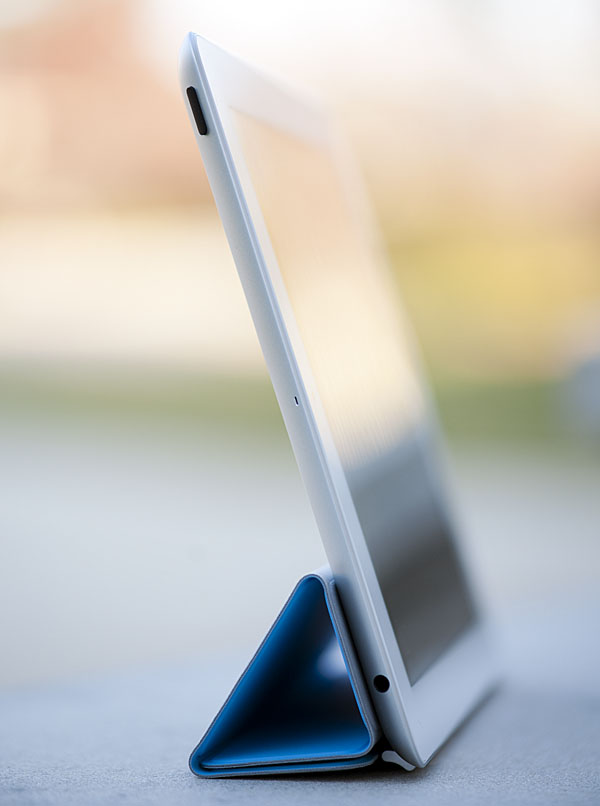
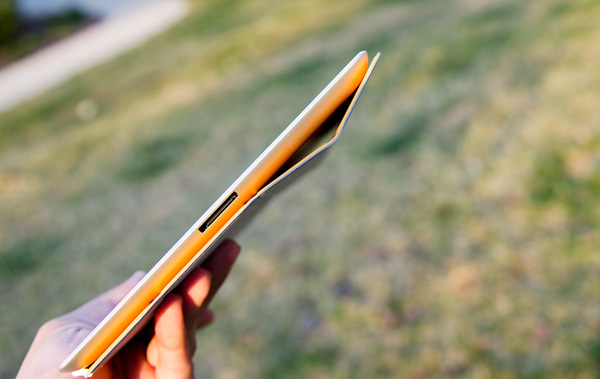
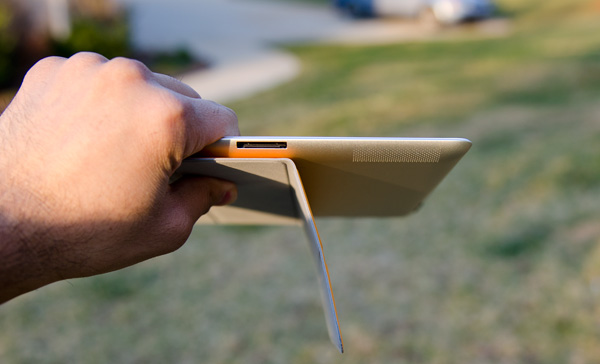








189 Comments
View All Comments
TareX - Sunday, March 20, 2011 - link
Irrelevant, but is Anandtech gonna do an Atrix review?name99 - Sunday, March 20, 2011 - link
"The Digital AV adapter is a bit clunky and I believe the future of this is clearly in some form of wireless transmission, but for now it plugs directly into the dock connector. "You mean the wireless transmission that ALREADY EXISTS called AirPlay?
Apple HAVE a solution to your hatred of wires. You seem to be upset that they don't have a solution that somehow magically transports video from iPad to your (HDMI and nothing else) TV using some non-existent wireless standard that isn't actually built into your TV.
It's fine to be frustrated at some of the idiocies in tech, but it's truly silly to complain about this one. Apple provides this cable for one, and only one, group of users --- people who actually NEED that physical wire.
BlendMe - Sunday, March 20, 2011 - link
AirPlay doesn't mirror tha iPads screen, it only allows you to stream content. For now. And for AirPlay you need an Apple TV or another AirPlay enabled device. The HDMI adapter allows you to hook it up to almost any recent TV, monitor or beamer.ananduser - Sunday, March 20, 2011 - link
In fact there is a standard already built in in most modern(emphasis on modern) TVs. It is called DLNA. Unfortunately Apple decided that coercing you into using their ecosystem ONLY is the way to go. Personally I find Apple's modus operandi of not giving 2 sh*ts about other 3rd party solutions one of the "idiocies in tech" as you well put it.Regardless, the iPad2(or 1) is a cool gadget(emphasis on gadget) nonetheless. Combined with leading parental controls as:no flash(as a porn enabler), no porn(appstore policy), no bloody/gory games(appstore policy) and a damn spartan simple and fast GUI makes it a great basic computing device for the naive crowd(parents, grandparents etc.). IMO it really shines for children as their 1st computing platform.
That it is also a frequent choice for the tech literate few, good on them... it still is best suited, IMO, for those of the above.
name99 - Sunday, March 20, 2011 - link
Can both of you not read?I was referring to, as I quoted, "The Digital AV adapter is a bit clunky and I believe the future of this is clearly in some form of wireless transmission, but for now it plugs directly into the dock connector. "
How do either of your comments have any relevance to that?
If you want Wifi, you need something that accepts a Wifi signal. Your TV doesn't have Wifi built in, so, yeah, you need some other box.
And DLNA? Really? You want to go there? Go explore the DLNA web pages (http://www.dlna.org/products is a good start) and tell me this pile of turds is EVER going to be relevant to the real world. For god's sake, man, get in touch with the real world. Compare that web page and everything it implies about compatibility nightmares and technobabble with the Apple TV web page.
Anand Lal Shimpi - Monday, March 21, 2011 - link
AirPlay is really for specific content at this point. I'm referring to the future of video out on tablets in general. And I didn't mention it as a knock against the iPad today, just a heads up that in some future version of the iPad you won't need a physical adapter (at least not on your tablet). When you have full wireless display mirroring then you can start introducing more interesting usage models - e.g. tablet as a desktop replacement, tablet as a game console, etc... You can do these things without wireless display but they are definitely enhanced by it being there.Take care,
Anand
Ushio01 - Sunday, March 20, 2011 - link
When ifixit did there teardown of the first ipad it was shown that apart from the battery and the antennas all the other components were kept up the top so why can't a tablet simply be a dock you slot a smartphone in that supplies a larger screen and additional battery's?That to me is a far more appealing device than current tablets.
kmmatney - Monday, March 21, 2011 - link
makes sense to me. I can't see Apple doing this, but maybe on of the Android makers can come up with something along these lines. I'd love to be able to pop my phone into the back of a tablet and use the bigger screen. I'd just keep it near the couch.zmatt - Sunday, March 20, 2011 - link
I still hold that the entire market segment (not just the iPad) is a solution looking for a problem. The idea seems cool but in reality nobody was asking for the tablet. And after using them I still can't see what the attractiveness is other than people buying them cause they are "cool". I take calls and get mobile updates on my Galaxy S, which is more than competent enough for light work such as taking down notes or answering emails on the go. Any real work I do with a computer. I'm sorry but you can't make up for the lack of performance and a real keyboard if you are talking about getting work done. The iPad may be nice for mobile entertainment, but if i already have an mp3 player and a laptop what can it do that they can't? For tablets to be viable productivity devices and not just toys i think they would basically have to evolve into laptops. So again i ask, what's the point?cucurigu - Sunday, March 20, 2011 - link
Thanks a lot for your review, Anand, Brian and Vivek - I was waiting for your opinion on the iPad 2 as it was a gadget most appealing but, as you said, very polarizing for the reviewers.There is something I didn't really understand, even after rereading the Xoom review - both you (Anand and Brian) said the first iPad wasn't your cup of tea in the long run and chances are the new one won't change this (but you're giving it another go). The general impression (one which I also got while looking at the tablet segment) is characterized by their unclear niche - where do they really fit ?
If I understand correctly the first tablet (ipad) didn't integrate with your workflow and the reasons seem to apply to all tablets, however, this sentiment doesn't come off so clearly from the Xoom article - so I wondered : did you have the impression the Android OS was more adequate to your usage patterns ? Meaning, if the Xoom and iPad 2 where left on your desk, which one would you choose to take with you, and for which purpose ?
Once again, thanks and best regards !